Master Sergeant Jay Cyril Mastrud, U.S. Air Force – Navy First, Air Force Always
The road through life is never straight and rarely fair. Some begin their journey with a supportive family and an adequate income, giving them a head start along their way. Others are not so fortunate, facing seemingly insurmountable hurdles that conspire to keep them from continuing. Yet they drive on, navigating around the hurdles until they reach a place where they can look back with pride at what they have accomplished. Such is the case for Master Sergeant Jay Cyril Mastrud, U.S. Air Force. Despite the hurdles placed in his path, Jay never gave up. He went from his roots in the Navy to become a successful and respected leader in the Air National Guard. He is a strong advocate for not trying to go it alone, but for reaching out to others for help when the hurdles seem too high. This is his story.
Jay William Hildmann—he would change his name to Jay Cyril Mastrud later in life—was born in 1969 to William and Madeline Hildmann. They lived in Cicero, Illinois, just thirty blocks north of busy Midway Airport in Chicago. The town was part of Chicago’s industrial backbone and home to such companies as General Electric Hotpoint and Western Electric. Jay’s father drove a catering truck selling food to the many workers in the local area factories, and his route took him through some rough areas. His father was robbed on more than one occasion and even shot at on the job, making his work situation very stressful. Not knowing how to deal effectively with the danger and having spent some time in jail and suffering trauma as a child, he brought his stress home and created a chaotic environment for Jay and his mother and siblings. Making matters worse, Jay’s mother, who immigrated from Europe, struggled with drug and alcohol abuse and unprocessed trauma of her own.
Jay’s family situation made him want to spend as little time at home as possible. Growing up, he did the kinds of things most kids in his neighborhood did, playing baseball and tackle football (without pads), watching trains go by on the nearby railroad tracks, and sneaking into the local racetrack with friends to watch the races. He had a tough time at school, not because he wasn’t smart enough, but because his home life made it difficult to stay focused or do homework. As a result, he took the vocational path through high school. This offered many advantages, particularly because his school, J. Sterling Morton High School East, was surrounded by factories in need of workers with a trade. When the school offered Jay the opportunity to learn about electronics, he found a hands-on subject he liked that could help him escape the chaos at home.
When it came time for graduation in June of 1987, Jay’s father gave him three choices. He could join the military, go to college, or get a job and pay rent. While Jay appreciated the clear choice his father offered, it was really no choice at all. College didn’t seem like a viable option at the time and there was no way he could continue to live at home – he had to get out of the house just like his older brother had done. That meant joining the military. Although his brother, Steven Grimes, had been a Marine, and Jay had a friend who wanted him to go Air Force, it was the Navy that caught Jay’s attention. So much so, that he remembers the recruiter’s name to this day, Petty Officer Second Class William Carmean, who worked out of the Berwyn, Illinois, recruiting office.
Jay’s only request was that he be assigned some place out west. Petty Officer Carmean said he could guarantee Jay a West Coast assignment, but could not guarantee the type of work Jay would be doing, known in the Navy as a “rate”. That would be up to the needs of the Navy wherever Jay was ultimately assigned. That was good enough for Jay and he signed his enlistment papers.
Jay reported to the Chicago Military Entrance Processing Station, or “MEPS”, in the summer of 1987 to begin his enlistment. After passing a physical exam and taking the oath of enlistment, he was officially a Navy recruit. Together with several other Navy recruits who reported the same day, Jay boarded a Chicago area Metra commuter train bound for boot camp at Naval Station Great Lakes, just a few miles north of Chicago. He remembers his assignment as if it were yesterday: Company 396, 13th Division, Compartment D1, Rack 1106. He also remembers boot camp was a tough transition for him as he went in a little overweight, which garnered him extra attention and lots of additional pushups. He managed to maintain a positive attitude throughout, which helped him successfully navigate the many challenges he faced.
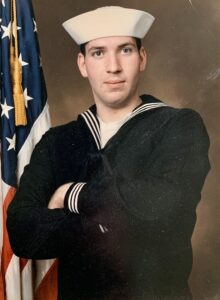
While at Great Lakes, Jay and the other recruits had the opportunity to meet with detailers, who were the Navy officials determining where the recruits would be sent for their first duty station. When it came Jay’s turn, the detailer told him his Armed Services Vocational Aptitude Battery (ASVAB) scores in the electronics field were off the chart. Suddenly, his vocational training in high school was paying off. The detailer gave him the choice of three electronics ratings to work in, and Jay chose the Aviation Fire Control Technician rate, abbreviated as “AQ”. This meant the Navy would train Jay to maintain and repair the advanced electronics weapons systems on aircraft deployed on ships around the world. He saw this as an exciting opportunity.
Before Jay could work on the equipment in the fleet, he had to go to another Navy school to learn his new trade. That happened after he graduated from boot camp on November 9, 1987. He left Naval Station Great Lakes and headed to O’Hare Airport in Chicago for his first flight in an airplane. He flew to Memphis, Tennessee, and then took a shuttle to the Naval Air Technical Training Center in Millington, Tennessee. There he attended “A” school, learning the fundamentals of his new AQ rate. As he loved working on electronics, he did well and enjoyed his time there. One incident, however, had a lasting impression on him. When he was standing fire watch one night in the barracks, one of the sailors living there slit his wrists with music from Led Zeppelin blaring in the background. Jay roused the duty petty officer from his rack to see what was going on and found the sailor in his room with blood everywhere. Jay and the duty petty officer quickly got the injured sailor medical attention and he recovered, but the scene never faded from Jay’s memory and no one senior to him recognized that the event likely traumatized both Jay and the duty petty officer. Jay graduated from “A” school in July 1988.
Although Jay had enlisted in return for an assignment on the West Coast, he received orders to report to fighter squadron VF-32, which was located at Oceana Naval Air Station in Virginia Beach, Virginia. The squadron flew the F-14A “Tomcat”, which Jay had seen in the 1986 movie Top Gun starring Tom Cruise as Maverick. When he arrived at Oceana, the squadron was already at sea, deployed onboard the aircraft carrier USS John F. Kennedy (CV-67). That meant boarding another plane and flying to Naval Air Station Sigonella in Italy, where he stayed for almost a week. He then proceeded to Naples, Italy, to meet the ship and join his new squadron underway.
When Jay reported to his squadron, he did not start working on electronics equipment right away because he was just an Airman Apprentice (E-2) with no prior Navy experience under his belt. Instead, he had to pay his dues learning about life at sea. That meant doing an initial assignment with the ship’s 1st Lieutenant, cleaning “heads” (bathrooms) and berthing spaces and doing laundry for the thousands of sailors living onboard the ship. When he was finished with that assignment, he was sent on another temporary assignment “mess cranking”, which meant he was tasked with helping out in the ship’s galley feeding the same sailors he had just cleaned and done laundry for.
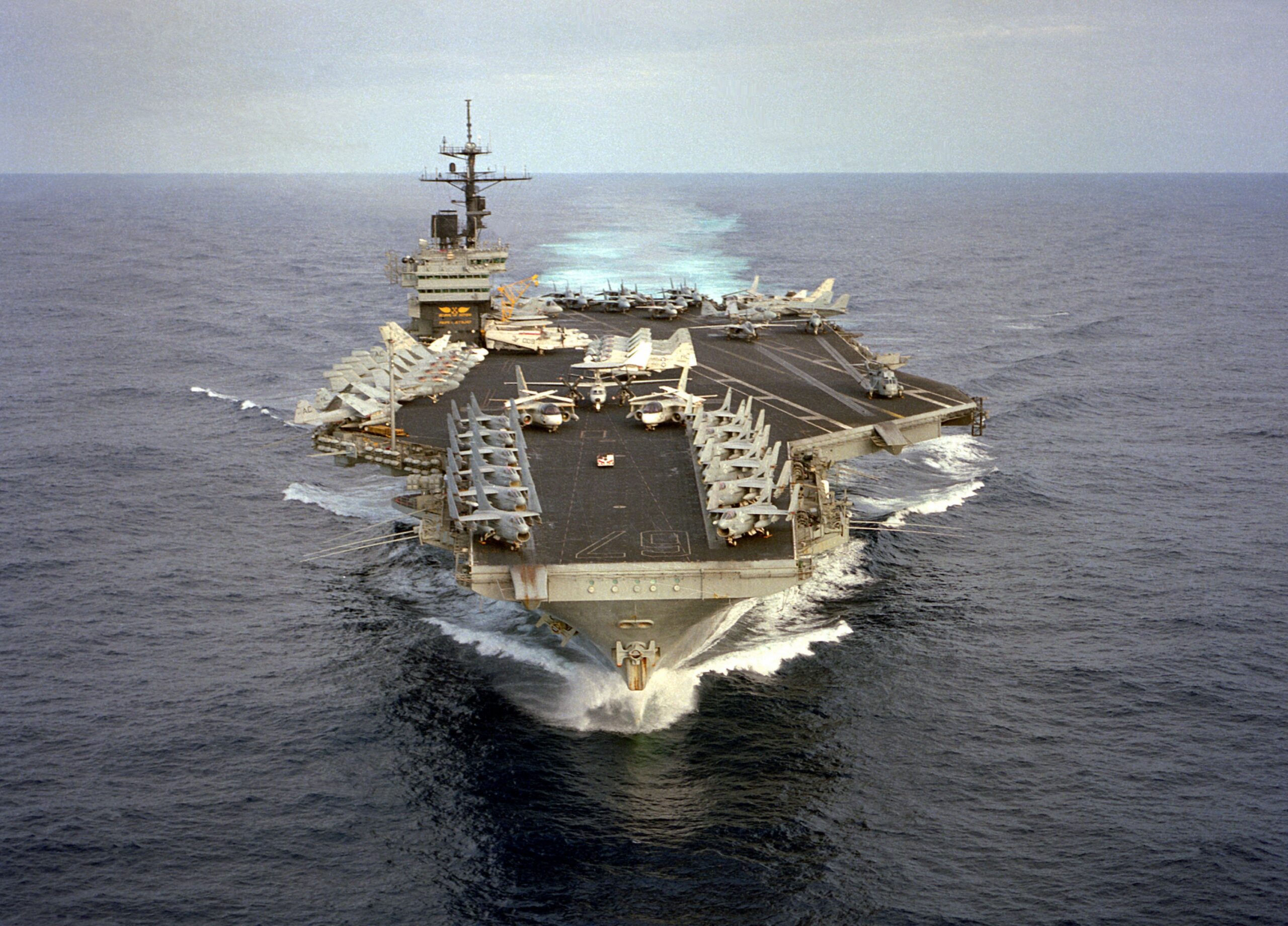
Given the size of the USS John F. Kennedy and the number of sailors onboard, the ship had several galleys. Jay was initially sent to work in the Air Wing galley where most of the enlisted members of his squadron ate, but it didn’t need people at that point, so he went to work in the ship’s main galley feeding the sailors assigned to the ship itself. Jay was fortunate to work for a Leading Petty Officer (LPO) and a Leading Chief Petty Officer (LCPO) who were both outstanding leaders. He credits them with setting him on the right path even though the work itself was not the most appealing. They wrote him excellent evaluations for the time he spent mess cranking and set him up for success with his squadron.
Jay and VF-32 returned to the United States onboard the USS John F. Kennedy in February 1989. Now an Airman (E-3), Jay was given the option to either work as a plane captain for another year at Oceana Naval Air Station or go directly to Integrated Weapons Team Work Center 280 to begin working on the equipment he had been trained to maintain and repair. Jay took the work center option, which allowed him to finally get back to doing what he really enjoyed and meet a great bunch of guys in the process. Although taking the option added two years to his enlistment, it allowed him to promote to Petty Officer Third Class (E-4) faster, making life in the Navy better all around.
Jay had one more deployment with VF-32 aboard the USS John F. Kennedy beginning in August 1990 in support of Operations Desert Shield and Desert Storm. Operating from the Eastern Mediterranean and the Red Sea, the aircraft carrier launched planes on combat missions against Iraq after it invaded Kuwait. The difference between this deployment and the previous one was that Jay was now a seasoned electronics technician, so his skills were essential in keeping VF-32’s Tomcats flying. He remembers spending many nights on the ship’s flight deck near the two F-14 fighters on “Alert 5”, meaning the planes were ready to be catapulted into the air on five-minutes notice. He and other maintenance people were on hand in case a last-minute problem developed that had to be fixed. Since there were lots of times when nothing went wrong, it gave the maintenance people the opportunity to talk and get to know one another. Jay recalls those conversations as some of the best discussions of his life.

Although the deployment was deadly serious, the ship made a few port calls and Jay got to visit some amazing places. He went ashore in Izmir, Turkey (where he visited ancient Greek and Roman ruins and met Kurds in person for the first time); Hurghada, Egypt; Alexandria, Egypt; and Jeddah, Saudi Arabia. In Jeddah, he was assigned to shore patrol duty on liberty buses transporting crewmembers around the port. He befriended the Saudi driver of one of the buses. The driver took him to a café where, according to local custom, Jay used his hands to eat rather than with western utensils. This opportunity to enjoy a meal with the Saudi bus driver stands out as one of Jay’s more memorable deployment experiences.
With the Desert Storm mission accomplished, Jay returned with VF-32 and the USS John F. Kennedy to the United States in March 1991, completing an almost nine-month deployment. Jay stayed with VF-32 at Oceana Naval Air Station until September 1992, when he decided to go back to being a civilian. After his discharge from active duty, he spent time touring Europe and even attended school in Spain, but ultimately returned to the United States and settled in Houston, Texas. While he was in Houston, he affiliated with the Naval Reserve and drilled with VFA-204, a Navy Reserve strike fighter squadron of F-18 “Hornets” flying out of Naval Air Station New Orleans. In 1994 he shifted to VFA-201, which flew out of Naval Air Station Dallas. Drills at both squadrons consisted of spending one weekend each month and two weeks each year working on F-18 Hornet radar systems, electronic countermeasure systems, communications systems, weapons systems, and other aircraft avionics. Although he especially enjoyed his time at VFA-201, by the summer of 1995 he needed a change and moved back to Chicago to live with his parents.
Moving back with his parents rekindled painful memories from Jay’s childhood and brought back stress and chaos to his life. He tried to stay affiliated with the Navy Reserve, drilling at Naval Air Station Glenview, but after just two monthly drill weekends, the installation closed as a result of the Base Realignment and Closure Commission (BRACC). He then shifted to drilling at the Great Lakes Naval Reserve Center, but that lasted for only a few months, as well. Not only did the Reserve Center have little for him to do, but when also coupled with the college studies Jay had begun at Harold Washington College and the unresolved family trauma he continued to deal with, it was just too much for him to handle. Although he took a break from drilling, he continued to work a variety of odd jobs to cover his school costs and rent, including helping his father with his catering truck and working security at Soldier Field. He also changed his name from Jay William Hildmann to Jay Cyril Mastrud after learning his father’s name related to his father’s foster parents and not his father’s biological parents. As Jay’s father only knew his biological mother’s name, Jay adopted her last name, Mastrud, to better reflect his lineage and personal identity.
Eventually, Jay decided to pursue his bachelor’s degree. After applying to a number of schools, he enrolled at the University of Minnesota in Minneapolis-St. Paul. He saw this as an opportunity to both further his education and get out of his parents’ house. Once he arrived in the Twin Cities, he drilled with a Navy Reserve unit there, but they had nothing for him to do and he was bored. Not wanting to waste his time, he changed his status from a drilling reservist to the Individual Ready Reserve (IRR). This kept him on the Navy Reserve’s rolls in case he was needed, but he no longer needed to drill. When his IRR obligation expired in 1998, the Navy was officially in Jay’s past.
In looking back over this period of his life, Jay realizes he would have benefitted from counseling to help him address the nagging issues from his childhood. As a kid, he was often in the “flight” mode, trying to get away from the bad situation at home. Now that same instinct made it difficult for him to find direction and focus. The result was he struggled to find himself and couldn’t get across the finish line for either his associate’s or his bachelor’s degree.

There was one aspect of Jay’s life that did provide structure and direction—his service in the military. Jay recognized that and again sought it out, this time enlisting as a Staff Sergeant (E-5) in the Minnesota Air National Guard in December 2000. The Air National Guard was a perfect fit for Jay given his prior Navy experience as an electronics technician, and it promised meaningful work he could do while attending classes at the University of Minnesota. He was initially assigned to the 133rd Maintenance Squadron of the 133rd Airlift Wing, where he worked on the avionics for the C-130 “Hercules” transport plane. Since he already had extensive training in the Navy, he asked for and was told he would get a waiver from the Air Force’s basic electronics training school, but his command never obtained the waiver. Accordingly, in July of 2001, he transferred to the Iowa Air National Guard.
Although Jay’s transfer to the Iowa Air National Guard was significant, the most important event of the summer was his marriage to his wife, Heidi. As they began their lives together, Jay also began drilling with the 133rd Test Squadron in Fort Dodge, Iowa. The assignment entailed Jay going to school at Keesler Air Force Base on the Gulf Coast of Mississippi to learn to work on ground radars. Then, on September 11th, the world changed with the terrorist attacks on the World Trade Center in New York City and the Pentagon in Arlington, Virginia.
After the attacks, Jay was activated to full-time active status and deployed stateside in response to the national emergency. Not only did this make for a rough start for his marriage to Heidi, but it also interrupted his studies at the University of Minnesota. Once his active duty period ended in 2003, he returned to Minnesota to pick up where he left off. He also returned to the Minnesota Air National Guard in September 2003, this time as part of the 210th Engineering & Installation Squadron, drilling at Minneapolis-St. Paul International Airport. This assignment was a good fit for Jay, and it complemented his new full-time civilian employment in 2007 with the Federal Aviation Administration (FAA). He even got to deploy with the unit to Alaska and was promoted to Technical Sergeant (E-6) in 2007. However, the assignment involved a lot of travel and was very tough on Jay’s family, which now included two young children who needed him at home. Although that would have been sufficient reason in and of itself, Jay’s mother-in-law was battling cancer and her health was declining. Accordingly, in 2009, Jay decided it was time to hang up his boots and end his Air National Guard career.
By late 2009, lots of the pieces in Jay’s life were starting to fit together in a way that made Jay’s transition to a full-time civilian possible. He had a stable, good-paying job with the FAA. He’d finished his associate’s degree in Liberal Arts from Harold Washington College in May of 2006, earned his associate’s degree in Electronics Systems from the Community College of the Air Force in November of the same year, and earned his bachelor’s degree in Classical Civilization from the University of Minnesota in May of 2008. He also had a wonderful family he loved very much. He still, however, had unresolved trauma from his childhood that kept him from experiencing the joy in life he knew he should be feeling.
Jay thought that perhaps connecting with other veterans through the American Legion or the Veterans of Foreign Wars (VFW) would help him come to terms with his past. For some reason, he convinced himself he didn’t fit in, even though the veterans he met were very welcoming. Then around 2010, he found Veterans in the Arts. The program offered veterans a way to find healing from trauma experienced in the military through a wide range of art projects, including writing, theater, glass blowing, and pottery. Jay took a chance and tried it. The results were life changing. The program introduced him to a number of veterans with different military experiences—some not as positive as his—and helped him see things through their eyes. Being accepting of their experiences also helped him deal with his own trauma, and for the first time, he sought professional counseling to help him come to terms with his past. He even co-founded the Warrior Writers Twin Cities writing group with two other veterans and had an article published in November of 2016, The Pacifist Preacher & Quanah Parker. At the same time, he became involved with the Veterans Play Project produced by Wonderlust Productions, which had several performances at historic Ft. Snelling in Minnesota. This experience further broke down barriers for Jay by exposing him to people with differing backgrounds and views, all bonding together through the arts.

On the road to healing and with a better view of who he was in hand, Jay returned to the military in August 2012. He enlisted in the Air Force Reserves in Minneapolis, drilling with the 27th Aerial Port Squadron of the 934th Airlift Wing at Minneapolis-St. Paul International Airport, where he planned and organized air transportation activities. He did this until August 2014, and then transferred to the Wyoming Air National Guard in December of that year, where he drilled with the 243rd Air Traffic Control Squadron until May of 2019. In this assignment, he provided technical expertise in maintaining air traffic control equipment and deployed with the unit to maintain combat readiness.
In September of 2019, Jay transferred to the Wisconsin Air National Guard with the 128th Air Control Squadron, to drill closer to home. Jay is responsible for maintaining the unit’s transportable ground radar system and for training other unit members to do the same. He’s deployed to Poland augmenting an active duty unit from Italy and feels as though the assignment has really allowed him to blossom as a leader. In fact, in May of 2020, he promoted to Master Sergeant (E-7), validating his long commitment to military service and his years of searching for and finally finding his military identity. The assignment has also allowed him to connect with others in the command who Jay admires because they model what it is to be a true citizen-soldier.
Today, Jay and his family live in St. Paul, Minnesota. Having learned from his own experience the importance of positive relationships and personal accountability, he is a staunch advocate for seeking professional help to overcome trauma, PTSD, and any other of life’s hurdles. He sees doing so as a sign of strength and determination, and is living proof it works. He urges others who may be struggling to seek out the help they need, and not suffer needlessly while trying to “fix things” on their own.
Voices to Veterans is proud to Salute Master Sergeant Jay C. Mastrud, U.S. Air Force, for his years of dedicated service in the Navy and the Air National Guard. Not only did he serve during a wartime deployment on board the USS John F. Kennedy during Operation Desert Storm, but he has also dedicated years of his life to the Air National Guard, keeping aircraft flying and radars protecting our skies. For his years of service, his personal sacrifices, and the leadership he continues to provide in both his military and civilian assignments, we wish him fair winds and following seas.
If you enjoyed Jay’s story, please sign up for the Voices to Veterans Spotlight monthly newsletter by clicking here. Once each month, you’ll receive a new written veteran’s story and a new podcast directly in your mailbox. Best of all, it’s free and you can unsubscribe at any time.
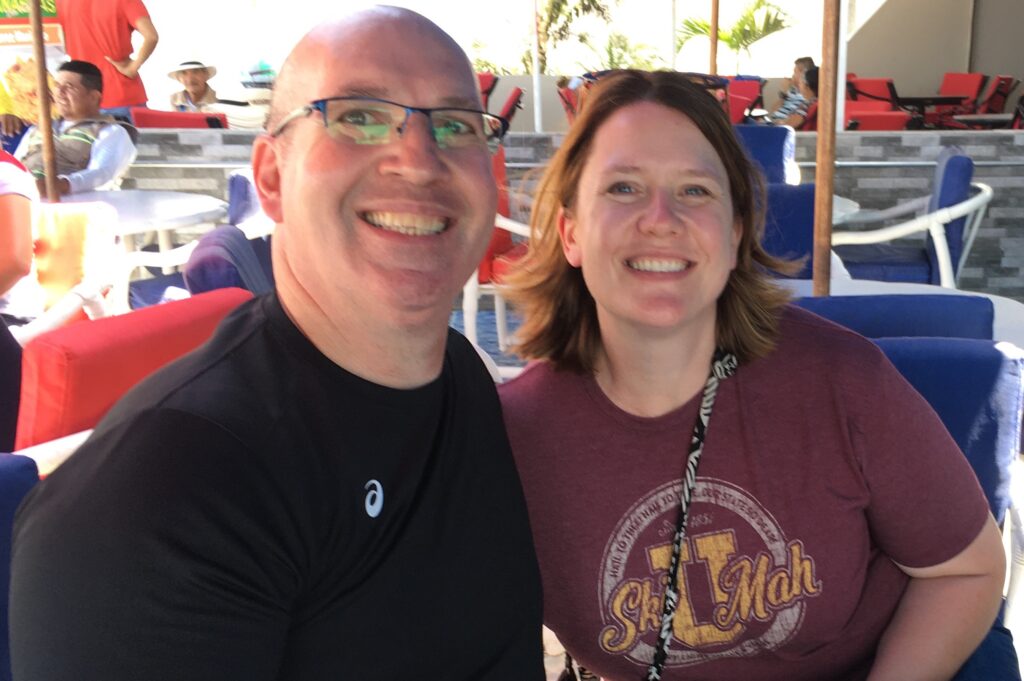

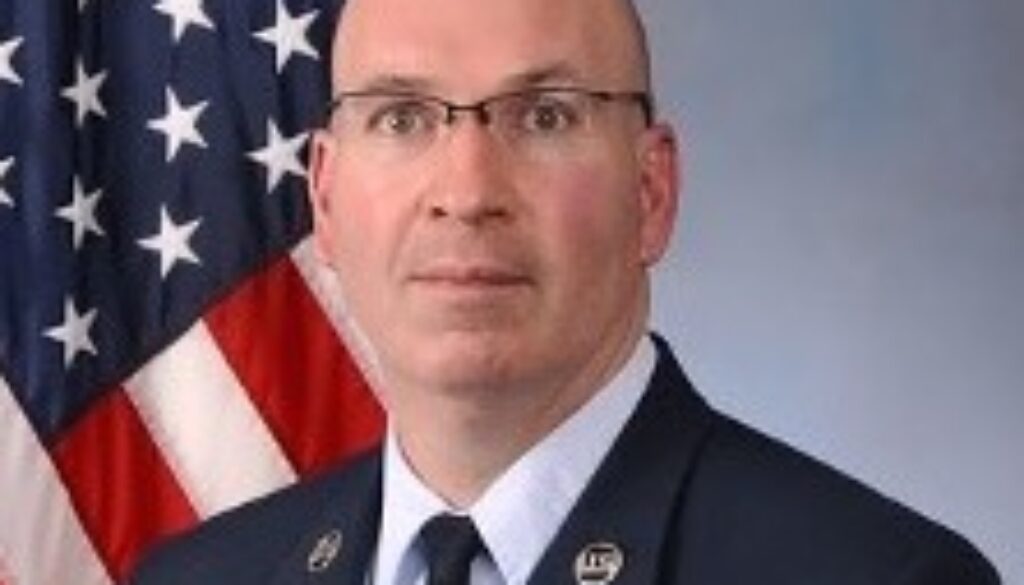
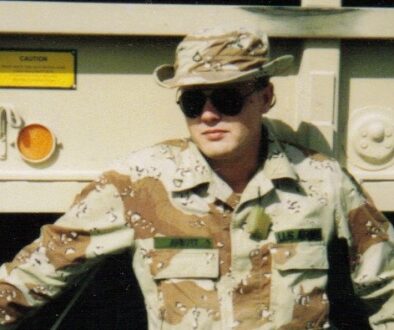

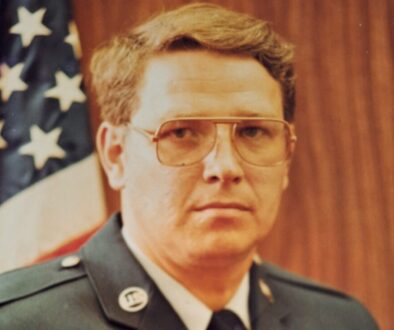
April 21, 2021 @ 4:47 PM
Great story! Many prayers to all of our Veterans.
April 25, 2021 @ 8:11 AM
George – Thanks for taking the time to read Jay’s story.
May 1, 2021 @ 12:53 AM
J so proud of you. Sorry about your brother.